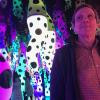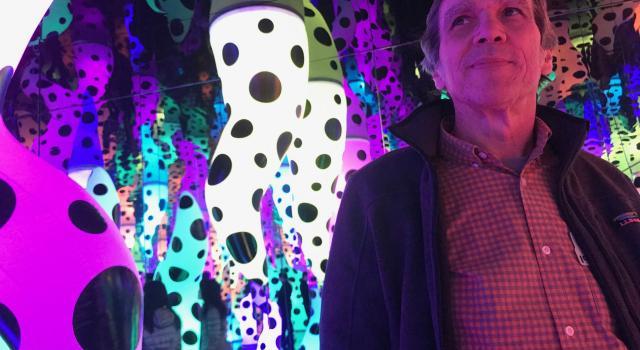
Peter Kallok

Peter Kallok received his B.A. from U.C.L.A. and his M.F.A. from the University of Washington.
He served as the technical director of the Summer Repertory Theater, Santa Rosa, California, for three years before joining StageWest in Springfield, Massachusetts, where he was technical director, scenic designer, and artistic associate. With more than 50 designs to his credit, Kallok's work includes scenery for Equus, Riches, Closer, Venus, and BFE, as well as lights for The Ride Across Lake Constance, Riches, Unplugging, and Bind Their Wounds at Hampshire College. Other professional and summer stock design credits include the Miniature Theatre of Chester, Summer Theatre Mount Holyoke, Worcester Foothills Theater, New London Barn Playhouse, and Summer Theater at Meredith Village.
Kallok has served as designer and fabrication consultant respectively for WALA Heimettel, International and AGH Design. He designed and fabricated scenic elements for Popa Depot for HERE'S American Living Room Series. Kallok's most recent project involved designing the physical environment for an Experiential Learning Space – an escape room-like educational training experience located at the U.S. Consulate in Frankfurt, Germany.
Kallok's courses include design-driven performance, scenic, costume, lighting, and projection design, light art, and exploring performance and entertainment venues.
Recent and Upcoming Courses
-
When designing costumes, projections, sound, lighting, or scenery, do theatre designers read and hear musicals any differently than a director or an actor? To what does a designer respond? Theme, character, dialogue, stage directions, place, time, rhythm, flow, music, and arcs all play into a designer's process of discovering the visual and aural possibilities of musicals on stage. How does a designer sift through the body of a script to discover clues of the physical nature of the play? As students are introduced to different design areas (scenery, props, lighting, costumes, projections, or sound) they will read, listen to, and discuss a variety of musicals representing different periods and genres. Students will research aesthetic styles and present initial design ideas for each musical. Students will expand their design vocabulary and practice design presentations. Keywords:musicals, design, theatre
-
Light Art encourages us to slow down, observe, absorb, perceive, and feel. Light art is immersive, it alters our mental and emotional state. Light art truly invites us into it, not in the figurative manner that all art can, but literally. You pass through it, and it devours you. Whether it's calming, agitating, or whimsical, light can provoke thought or initiate a chuckle. Within a studio format the class will manipulate light and explore light as sculpture and environment. We will tell stories and create acts of guerilla lighting. Using theatre lighting instruments and a vast array of other light emitting sources, students will create individual lightworks that express narratives, or simply reveal. We will study color, color mixing, reflection, and refraction. Students will develop skills and techniques that will inform students' personal use of light as an expressive medium. We will review the history of light art as well as the works of several light artists. Keywords:light, art, installation, studio, color
-
Working collaboratively and individually, students will undertake a series of design exercises as they work toward shaping performances that are inspired by design ideas. Traditionally, theatre directors, playwrights, or actors take the lead in creating performed projects. What happens when designers initiate theatrical work? How can design speak to an audience? How does design develop narrative, tension, and conflict? We will examine methods of using design elements that can carry an audience and sustain engagement. We will also explore how design ideas can spark the development of devised work involving performers. Throughout the semester we will survey the work of selected artists while analyzing how they mix traditional theatre design forms (sound, lighting, costumes, scenery, props) with new media and technology. With the assistance of classmates, students will develop and "perform" individual pieces inspired by their own design visions. Keywords:theatre, design, performance
-
In this course we will explore traditional and non-traditional spaces for arts, performance, and entertainment through functional and historical lenses. Theatre, dance, and music venues, escape rooms, theme parks, art galleries, museums, and film locations come to life in a wide range of structures and locations. How does the historical evolution of a space contribute to its suitability, and how have traditional spaces evolved and transformed over time? What elements help create the physical functionality and appropriateness of each space? As we look at the relationship between creative work and where and how that work comes to life, we will explore how spaces for exhibition, performance, or entertainment differ. We will explore a variety of spaces and the creative communities who use or have used them. We then take an introductory look at design elements such as scenery, lighting, sound, costume, and projection design. With each space considered, we will examine the many ways design elements support stories, narratives, and artistic visions. Keywords:Entertainment, Theater, Design, Exhibition, Performance, Space
-
When designing costumes, projections, sound, lighting, or scenery, do theatre designers read plays any differently than a director or an actor? To what does a designer respond? Theme, character, dialogue, stage directions, place, time, rhythm, flow, and arcs all play into a designer's process of discovering the visual and aural possibilities of texts. How does a designer sift through the body of a script to discover clues of the physical nature of the play? As students are introduced to different design areas (scenery, props, lighting, costumes, projections, or sound) they will read and discuss a variety of plays representing different periods and genres. Students will research aesthetic styles and present initial design ideas for each play. Students will expand their design vocabulary and practice design presentations. Keywords:Theater, Design, Plays
-
There are processes designers in the theatre must undertake to realize the physical world of a play. Within the performing arts no single aspect of design exists in isolation and no designer should fly solo. Moving through a series of individual and group exercises, students will begin to develop their own process toward expressing the passion of a theatre work through their designs. Throughout the semester students will develop a design vocabulary that allows for collaboration and interplay, while producing unified and coherent design work. This semester particular emphasis will be placed on scenic and costume design. Students will be introduced to the tools of design communication: drafting, models, rendering, etc. as they learn to discuss and to respond to performance works. Keywords:Theater, Scenery, Costumes, Design
-
In this hands-on course students are introduced to the processes of live theatrical production. We will examine and take part in the collaborative nature of theatre production arts during the Fall semester under the real constraints of time, materials, budgets, and acquired skills. Working with the design and production teams of these projects, the class will assist in the realization of the visual, physical, spatial, and aural components. In addition to building the elements of the productions, students will also have the opportunity to participate on the running crews during the performances. Each student will become a part of the entire production experience. Students will be expected to commit to evening hours during the technical rehearsal and performance dates. KEYWORDS: Theater, Design, Production, Plays, Stage Crew
-
What draws us to the light? What is the depth of our connection? We use light as a mode of artistic expression: to illuminate, to underscore, to surprise or intimidate, and to support the art of theatrical storytelling. This class explores the artistry of lighting design in the theatre. Students will study and practice how light defines and reinforces line, movement, texture, scale, and color. Students develop lighting design ideas as they relate to a dramatic text. While incorporating the functions of theatrical lighting design: instrumentation, control, color, and distribution, students learn how to draft a light plot and prepare lighting cues. Students will experiment with light manipulation in class and work on group and individual projects. Students must have a laptop (no tablets or Chromebooks) - we will be downloading drafting software, Vectorworks (free for students). KEYWORDS:Theater, Design, Lighting, Production, Plays


